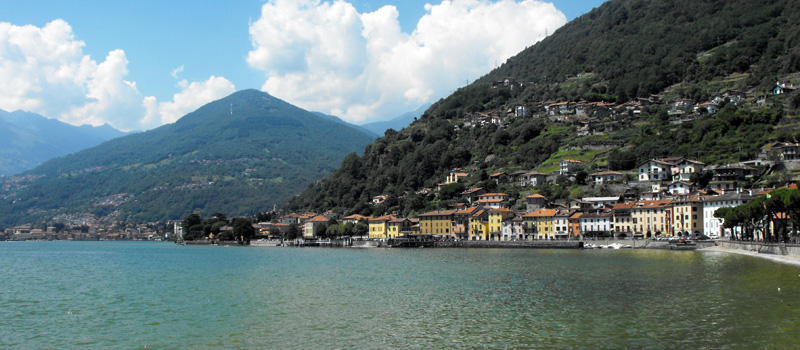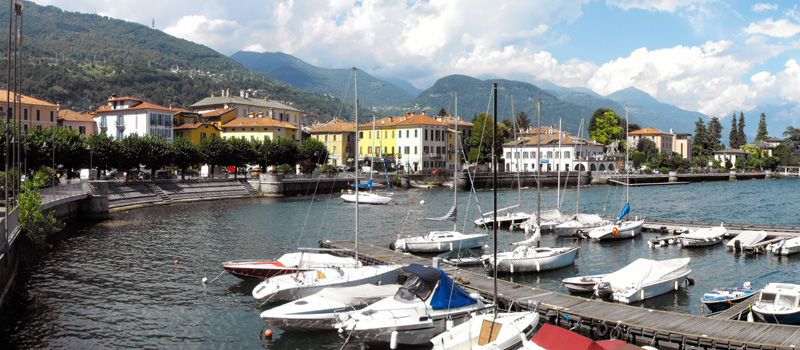
Upon leaving Lake Como, coming from the eastern shore of Lario, or from Colico or from the fascinating Piona Abbey, you can see the solid, massive structure of the Romanesque Church of Santa Maria del Tiglio grow right before your eyes.
The building, built in the 12th century upon the layout of a previous church, dating back to the Queen Teodolinda, wife of Autari who seized Comacina Island, and better known for the Iron Crown belonging to the Treasure of the Monza Duomo, is of a very strong, yet refined architecture. A belfry designed and realised in the 18th century with two and three-mullioned windows under the high bell naos, is incorporated into the façade's centre, slightly to the rear. It actually expresses the majestic work of the stone cutters engaged in fitting out regularly worked ashlars in order to create the solid walls, brightened by the mighty layout of light rows contrasting with grey rows. The Church of Saint Maria of Tiglio proposes a stereo-metric vision, of parallelepiped and semi-cylindrical volumes harmoniously connected, edged by blind pensile arches and the overhanging saw-tooth motif, typical of the late Romanesque period.
Inside there is a built-in Roman alter, a part of a mosaic floor from the 5th century, a baptismal dating back to the previous baptistery of Saint Giovanni Battista, a Romanesque wooden crucifix, and frescoes from the 13th and 16th centuries. Finally, there is a splendid polygonal-design tower standing against the façade, which is a point of reference for all the surrounding lands.

Over time Domaso, being an ancient fishing town, has become the Upper Lake's most hospitable center, rich in campsites and facilities for welcoming tourists, all while maintaining the characteristics of its history intact.
Domaso
Dried Shad (Agone), called Missoltini or Missultin, were at one time a precious food for inhabitants of Lake Como, the particular processing allowed them to be conserved for more than a year, traditional Lake Como cuisine.
Lario Cuisine
In Dongo, among the buildings stands out the neoclassic Manzi, today town hall and site of the Museum of the end of the war (Resistance Museum), a building realized by Pietro Gilardoni (1824), a student of Pollak.
Dongo